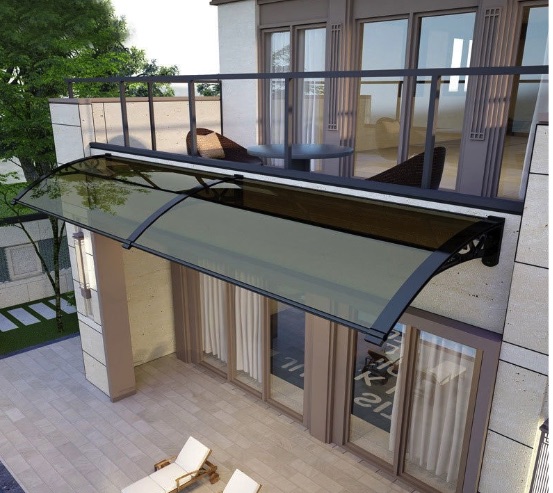
Retractable awnings have gained popularity in recent years as a versatile and stylish solution for providing shade and protection from the elements in both residential and commercial settings. These awnings offer a range of benefits, including flexibility, energy efficiency, and aesthetic appeal. However, like any home improvement feature, retractable awnings come with their own set of advantages and considerations. In this article, we will explore the pros and cons of retractable awnings to help you determine whether they are a good idea for your specific needs and circumstances.
Pros of Retractable Awnings
- Sun and Shade Control: One of the primary advantages of retractable awnings is their ability to provide instant shade when you need it and retract when you don’t. This flexibility allows you to enjoy both sunny and shaded areas in your outdoor space, making it more comfortable and enjoyable.
- Energy Efficiency: Retractable awnings can help reduce your home’s energy consumption by blocking direct sunlight from entering your windows during the hottest parts of the day. This, in turn, can lead to lower cooling costs, making them an eco-friendly option.
- UV Protection: Retractable awnings offer UV protection, shielding you, your family, and your furnishings from harmful ultraviolet rays. This protection can help prevent fading of indoor furniture, flooring, and artwork.
- Enhanced Outdoor Living: With the addition of a retractable awning, you can create an outdoor living space that is comfortable and shaded. This allows you to entertain guests, dine al fresco, or simply relax outdoors, even on hot or rainy days.
- Aesthetic Appeal: These awnings come in a variety of styles, colors, and materials, allowing you to choose a design that complements your home’s architecture and enhances its curb appeal. They add a touch of elegance to your outdoor space.
- Increased Property Value: The addition of a retractable awning can enhance the resale value of your home. Prospective buyers may see it as a desirable feature, especially in areas with hot and sunny climates.
- Protection from Light Rain: While not designed for heavy rain or storms, retractable awnings can provide light rain protection, allowing you to stay dry while enjoying your outdoor space during a brief shower.
- Easy Maintenance: Maintaining retractable awnings is relatively simple. Regular cleaning and occasional lubrication of moving parts are typically all that’s required to keep them in good condition.
- Customization Options: You can choose from various accessories and features, such as motorized controls, wind sensors, and lighting options, to customize your retractable awning to suit your needs.
Cons of Retractable Awnings
- Initial Cost: Retractable awnings can be relatively expensive to purchase and install compared to fixed awnings or other shading options like umbrellas. The cost can vary depending on the size, features, and quality of the awning.
- Installation Complexity: Proper installation is crucial for the functionality and longevity of retractable awnings. It’s recommended to hire a professional installer, which adds to the overall cost.
- Maintenance Requirements: While maintenance is relatively straightforward, it’s essential to perform it regularly to prevent issues like fabric damage or motor malfunctions. Neglecting maintenance can lead to costly repairs.
- Wind Sensitivity: Most retractable awnings are not designed to withstand high winds. Wind can cause damage to the awning or even dislodge it from its mounting. Some models come with wind sensors that automatically retract the awning during strong gusts, but this feature adds to the cost.
- Limited Coverage Area: Retractable awnings typically cover a limited area and may not provide shade for larger outdoor spaces. The size of the awning you choose will determine the extent of the shaded area.
- Potential for Fabric Wear: The fabric used for retractable awnings can wear out over time, especially in climates with extreme sun exposure. Replacing the fabric can be an additional expense.
- Motorized Mechanisms Can Fail: If you opt for a motorized retractable awning, the motor and related components can malfunction over time, requiring repairs or replacements.
- Design Limitations: While retractable awnings offer customization options, they may not be suitable for all architectural styles or outdoor spaces. In some cases, their design may clash with the overall aesthetic of your home.
- Lack of Snow Load Resistance: In areas prone to heavy snowfall, retractable awnings are not recommended. Snow accumulation can damage the awning’s frame or fabric, and removal of snow from the awning can be challenging and potentially dangerous.
- Limited Lifespan: Despite regular maintenance, retractable awnings generally have a finite lifespan compared to more permanent shading solutions. The frame and moving parts can wear out over time, requiring replacements or repairs.
Conclusion
Retractable awnings offer a range of benefits, including sun and shade control, energy efficiency, and aesthetic appeal, making them a popular choice for homeowners seeking to enhance their outdoor living spaces. However, it’s essential to weigh these advantages against the potential drawbacks, such as initial costs, maintenance requirements, and design limitations.
The decision to install retractable awnings should be based on your specific needs, budget, and the climate of your region. If you value the flexibility and aesthetic appeal of retractable awnings and are willing to invest in their maintenance and care, they can be an excellent addition to your home. However, if you are looking for a more permanent or cost-effective shading solution, it may be worth exploring other options. Ultimately, whether retractable awnings are a good idea depends on your circumstances and priorities.
